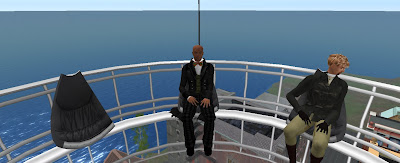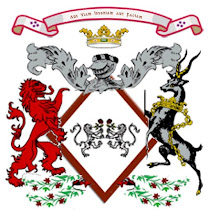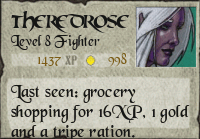
The wheel of the seasons
As we prepare to celebrate May Day, or Beltane, I would like to share a little more history and insight into the holiday itself and into the music I have chosen for the theme this year.
In Scottish Gaelic the month of May is known as either (An) Cèitean or a' Mhàigh, and the festival is known as Latha Bealltainn or simply Bealltainn - meaning ‘bright/sacred fire’. The holiday was held to mark and celebrate the blossoming of spring, and coincided with the ancient pastoral event of moving livestock into their summer grazing fields. It did not occur on any fixed solar date (the tradition of solstices and equinoxes is later in origin) but tended to be held on the first full moon after the modern 1st of May. Some sources suggest that the blooming of the Hawthorn was the primary signal for the event before the development of centralized calendars.
It was nearly entirely a celebration of the fertility of the land and their animals. The main traditional element which was common to all Beltane festivals was the fire which gave it its name. All the fires of the community would be extinguished and a new, sacred ‘Need Fire’ was lit by either the village head or spiritual leader. From this source one or two bonfires were lit, and the animals of the community would be driven through or between them. It was believed that the smoke and flame of the fires would purify the herd, protecting them in the year to come and ensuring a good number of offspring. The inhabitants of the village would then take pieces of the fire to their homes and relight their hearths, and dance around or near the bonfires to ensure good portents for them and their families.
**As is my custom, we will begin the evening with a celebration of my Clan and the Knights of the Order of the Red Rose, and then lighting of the Beltane Need Fire. Each guest will also be offered a Beltane lamp which will light as s/he approaches the Need Fire. This light may be taken to his/her own hearth.**
This spring/summer rite was celebrated in many ancient cultures. Some continue it even in modern times. In many traditions the focus of Beltane is on the battle between the May Queen and the Queen of Winter. The May Queen can be recognized as Flora, the goddess of the flowers, and the young blushing bride, and the princess of the Fae. She is Lady Marian in the Robin Hood tales, and Guinevere in the Arthurian cycle. She is the embodiment of the Maiden, of mother earth in all of her fertile glory.
As the summer rolls on, the May Queen will give forth her bounty, moving into the Mother phase. The earth will blossom and bloom with crops and flowers and trees. When fall approaches, and Samhain comes, the May Queen and Mother are gone being young no more. At this point, the earth becomes the domain of the Crone. She is Caillæch, the hag who brings dark skies and winter storms.
When Beltane arrives each spring, the May Queen arises from her winter's sleep, and does battle with the Crone. She fights off the Queen of Winter, sending her away for another six months, so that the earth can be abundant once more.
Beltane has a long history. The Celtic fire festival is celebrated with bonfires, Maypoles, dancing, and lots of good old fashioned sexual energy. Cattle were driven through the smoke of the fires, and blessed with health and fertility for the coming year. In Ireland, the fires of Tara were the first ones lit every year at Beltane, and all other fires were lit with a flame from Tara.
The Romans celebrated the Floralia, or festival of flowers, which consisted of three days of unbridled sexual activity. Participants wore flowers in their hair (much like May Day celebrants later on), and there were plays, songs, and dances. At the end of the festivities, animals were set loose inside the Circus Maximus, and beans were scattered around to ensure fertility. The fire festival of Bona Dea was also celebrated on May 2nd.

Flora dances with Zephyr in the sculpture by Giovanni Benzoni
The entity known as the Green Man, strongly related to Cernunnos (The Horned God), is often found in the legends and lore of the British Isles, and is a masculine face covered in leaves and shrubbery. In some parts of England, a Green Man is carried through town in a wicker cage as the townsfolk welcome the beginning of summer. Impressions of the Green Man’s face can be found in the ornamentation of many of Europe’s older cathedrals, despite edicts from local bishops forbidding stonemasons from including such pagan imagery.
A related character is Jack-in-the-Green, a spirit of the greenwood. References to Jack appear in British literature back as far as the late sixteenth century. Sir James Frazer associates the figure with mummers and the celebration of the life force of trees. Jack-in-the-Green was seen even in the Victorian era, when he was associated with soot-faced chimney sweeps. At this time, Jack was framed in a structure of wicker and covered with leaves, and surrounded by Morris dancers. Some scholars suggest that Jack may have been a ancestor to the legend of Robin Hood.
A Beltane ritual usually involves lots of fertility symbols, including the obviously-phallic Maypole dance. The Maypole is a tall pole decorated with flowers and hanging ribbons, which are woven into intricate pattern by a group of dancers. Weaving in and out, the ribbons are eventually knotted together by the time the dancers reach the end.
This festival is also seen as a time when the veil between worlds is a bit thinner - a time for the faeries. The appearance of flowers around this time of year heralds the beginning of summer and shows us that the fae are hard at work. In early folklore, the more helpful deeds of the fae should always be acknowledged and appreciated, therefore, Beltane offered a good time to leave out food and other treats for them in your garden or yard.

**Now that you have read some basic history on the festival, if you are not familiar with Carmina Burana, you may be wondering what the music that plays in every great battle scene (a slight exaggeration) filmed in late 20th century has to do with a fertility festival. Well - allow me to let Marin Alsop's words from NPR in November of 2006 answer that question for you
If I could only take one piece of music on a long trip, I might pick Carl Orff's Carmina Burana. Its 25 tracks offer something for everyone — and a piece of music for every mood imaginable.
The subject matter covered in Carmina stays pretty basic: love, lust, the pleasures of drinking and the heightened moods evoked by springtime. These primitive and persistently relevant themes are nicely camouflaged by the Latin and old German texts, so the listener can actually feign ignorance while listening to virtually X-rated lyrics. (Veni Veni Venias! Come, come come now!)
The music itself toggles between huge forces and a single voice, juxtaposing majesty and intimacy with ease. At its largest, Carmina employs a chorus of 200 or more voices, an orchestra of 100 players and a children's choir of 50 or more, plus three soloists (soprano, tenor and baritone).
The music's style is equally inclusive, ranging from simple chant to almost rock-inspired rhythmic sections. The opening and closing tracks, both titled "O Fortuna," mirror each other: They begin with all forces at full throttle, then immediately scale back in an ominous warning repetition that builds to a climactic close. Between these bookends lies music of many diverse styles, with a hypnotic repetitive element, an intense purity of the solo soprano and the children's choir, a raucous quality to the all-male sections, and a humor underlying the lewd nature of the lyrics (which sound so erudite in Latin), all combining to create an immediacy and accessibility not found in many works.
That may not have been what Orff envisioned when he wrote Carmina Burana in 1936, but he did have much more than a straightforward musical experience in mind. He subtitled his exuberant hour-long oratorio "Cantiones profanae, cantoribus et choris cantandae, comitantibus instrumentis atque imaginibus magicis," or "Secular songs for singers and choruses accompanied by instruments and magical images" — hardly typical concert fare.
From a conductor's (and may I - Eva - add, the singer's) point of view, Carmina is an absolute blast — so many people, so many textures, so much variety. And, contrary to what conductors might tell you, when 300-plus performers are involved, size does matter.
**As I have once again been learning more and more about the festival, I have learned something more this year about the 'players', and I am thinking that it will be grand fun, if those in attendance this weekend would like to play - or at least dress in - one of the following roles.**
The ‘royal court’ of the festivals - consisting of the May Queen and her Consort the Green Man, her White Women guard, the musicians the Processional Drummers, and the guardians of the ritual, the Blue Men:
We know that our forefathers very generally kept the beginning of May as a great fertility festival, and it is still regarded as the trysting time of wise-women and fays.
The May Queen is also known as The Maiden, goddess of spring, flower bride, queen of the faeries, lady of the flowers. The May Queen is the stillness around which everything revolves. She embodies purity, strength and the potential for growth. She is the personification of the energy of the earth.
As I mentioned earlier in this post, she was Maid Marian in the medieval Robin Hood plays and May Games. She is also the young village girl, crowned with blossom, attended by children with garlands and white dresses.
At Samhuinn and Imbolc, the May Queen is replaced with a wintery figure - the crone, or Cailleach - a blue-faced hag who brings winter storms and bad weather to the lands. She is associated with the protection of wells and watery places, and is found in different guises through Northern Europe.
The blue paint alludes to the woad used by Celtic warriors, but the
Blue Man himself has come to act as the elder....the Blue Man’s role is both practical and spiritual. Queens come and go, the King is killed and reborn each year, but the Blue Man is constant. He keeps the collected wisdom of the Court, the knowledge of the ritual, and maintains the order required by nature.
He leads the Court through a spiritual landscape primed with pitfalls to see the summer safely brought about with the death - and subsequent rebirth - of the Green Man.
The May Queen’s male Consort,
The Green Man is sometimes simply called the May King. He is known by many names. Some call him Jack-in-the-Green, Robin Hood or the woodland faery Puck - Robin Goodfellow. In France he was called Father May, in Russia he was the Little Leaf Man. He may be called Green George, Wild Man or Wodewose.
In all these places and in all these times he was dressed in leaves, in ivy, evergreens and flowers - he was entirely hidden from view - a living spirit of the spring vegetation.
At Samhuinn the Green Man seen is the character of the ‘Horned god’ or ‘Holly Lord’ who rules over winter.
At Beltane the Green Man begins in a dormant and inactive state in the form of the old Horned God, until he ‘dies’ when he touches the May Queen. Her Handmaidens tear his garments from him and he is ‘reborn’ as the young Green Man with a wild exhilarating dance that celebrates his youth and the new summer.
The Handmaidens and
White Women protect the May Queen and attend to her later in the evening in her otherworldly bower. They are the order and discipline to the chaos and misrule.
A white woman encompasses many aspects of a warrior. An army of strength and protection to surround and ensure the safety of the court at Beltane. Each white woman is a part of a well-oiled machine, sure and steadfast in her role, each a heartbeat, part of the rhythm of the ritual.

** I do hope you will find time to come join us in the Isle of Skye for the first Beltane Ritual celebrated there in many, many years. Come as you are. Come as a May Queen. Come as Maid Marian. Be a Green Man. Don the blue and come as an elder. Find your Fae. But come celebrate!**








































